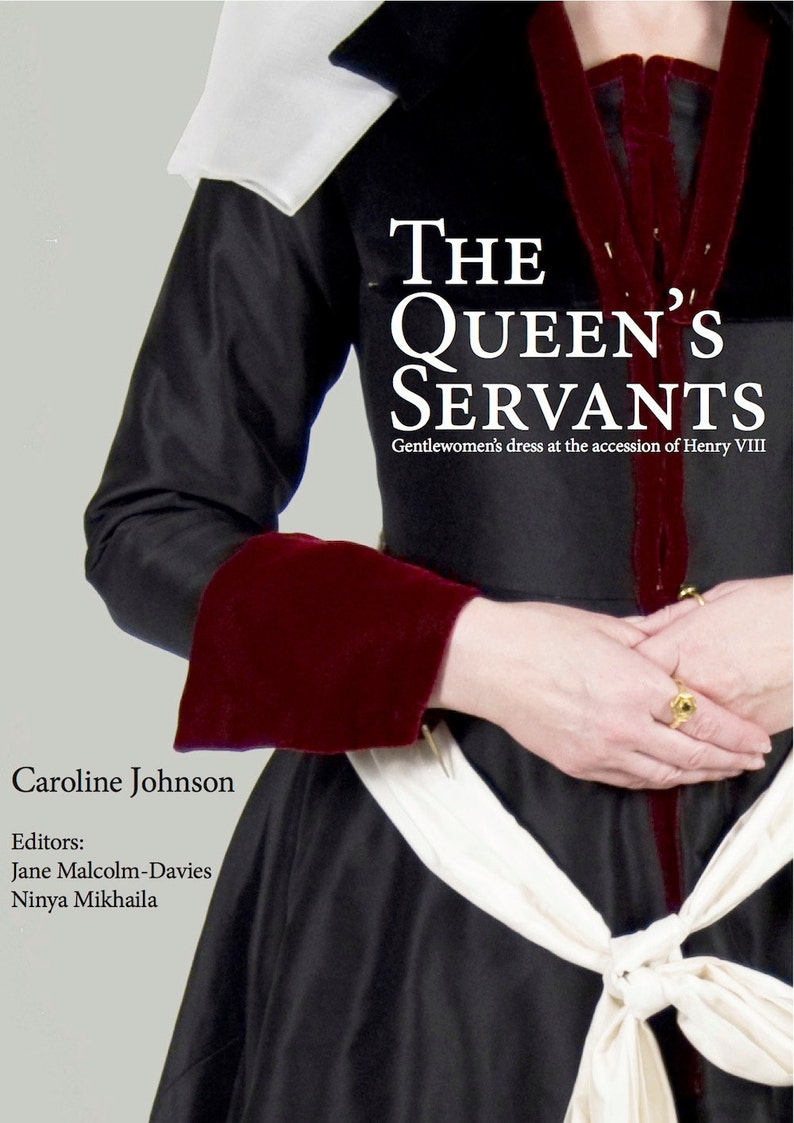 |
| The Queen's Servants by Caroline Johnson |
The link above gives a good overview of the book's content, so I'll keep the summary brief. The main differences between The Queen's Servants and The Tudor Tailor is the emphasis on analyzing original garment records: we're taking pie charts of color and material frequency, period yardage/pricing info, and hypothesized cutting lay-outs. Additionally, this book only looks at ladies' clothing* (there are separate volumes for men's and children's), and focuses on the earlier Tudor period (reign of Henry VII and early reign of Henry VIII). The illustrations include photographs of historic funerary monuments, artists' renderings of clothing from primary source texts, and photographs of reproduced garments. It runs 56 pages, including references and glossary.
[*Specifically, high-ranking women attached to the royal household: princesses, queens, the ladies and gentlewomen who attend them, and the occasional court pensioner.]
The description and analysis of primary sources deal with the fabrics and furs used for clothing, discussing the colors, yardage, prices, and customs. I like that the sources are very clearly cited, and that conjectures are explicitly described as such.
The given patterns are for one smock (with neckline variations), one kirtle (sleeve and fastener variations), two gowns (four sleeves and neckline variations), and two bonnets. The cutting patterns are given on grid paper, and will need to be sized to the wearer; general sewing instructions are also included, as well as marginalia showing relevant hand-sewing techniques. This isn't a beginner-friendly pattern, but I think it's quite clearly written, and would be usable by ambitious intermediate sewists. Beginners (and people who don't want to scale-up cutting diagrams) may want to consider the related pattern line.
The focus of this book is more narrow than The Tudor Tailor, but I think the discussion of primary sources really makes it worthwhile. If you're looking for lower class, mid/late 16th century, or men's clothing, this isn't the book you want. But for late 15th/early 16th century English noblewomen, you couldn't get a better reference.
Stars: 5
Accuracy: High.
Skill Level: Intermediate, tending Advanced
Strongest Impression: Good scholarship; the different time-frame makes it a companion to The Tudor Tailor rather than competition.
No comments:
Post a Comment
Thanks for commenting!